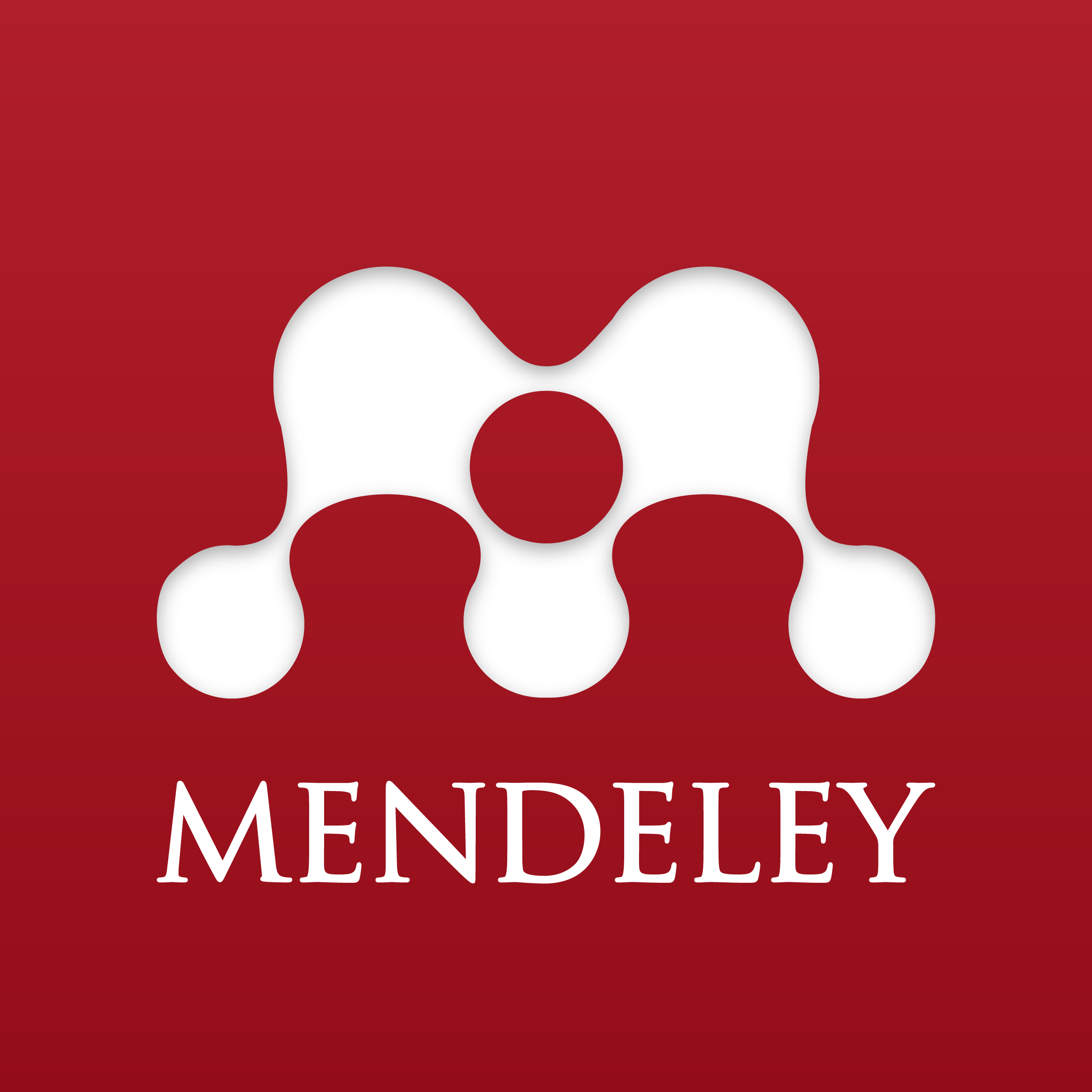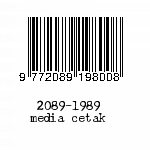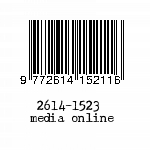The Effect of Social Environment on Household Consumption Patterns through Lifestyle
Abstract
This study examines the influence of the social environment on household consumption patterns through lifestyle. The research sample was 100 employees of PT. Japfa Comfeed Indonesia Gedangan Unit, Sidoarjo Regency. Data were collected using questionnaires distributed directly to workers and analyzed using descriptive analysis, linear regression, and the Sobel test. The study's results include: first, the social environment affects household consumption patterns (the higher a person's social environment, the higher the consumption pattern) and lifestyle (people who live in a high social environment tend to have a more elevated lifestyle). Second, lifestyle directly affects household consumption patterns (people with a high lifestyle will have higher daily consumption) and mediates the influence of the social environment on household consumption (people with an elevated lifestyle and living in a high social environment will have higher daily consumption
References
Afiftah, A. T., Juliprijanto, W., & Destiningsih, R. (2019). Analisis pengaruh pengeluaran konsumsi pemerintah dan pengeluaran konsumsi rumah tangga terhadap pertumbuhan ekonomi di Indonesia tahun 1988-2017. DINAMIC: Directory Journal of Economic, 1(1), 11–22. https://doi.org/10.31002/DINAMIC.V1I1.
Amini, N., & Wirman. (2021). Pengaruh pembiayaan murabahah, mudharabah, dan musyarakah terhadap profitabiltas return on assets pada Bank Syariah Mandiri. Jurnal Ilmiah MEA (Manajemen, Ekonomi, & Akuntansi), 5(2), 50–63. https://doi.org/10.31955/mea.vol5.iss2.pp50-63.
Angelini, C. (2019). Regression analysis. Encyclopedia of Bioinformatics and Computational Biology, 722–730). https://doi.org/10.1016/B978-0-12-809633-8.20360-9.
Aziz, A., Permana, I. S., & Alfarisi, M. J. (2019). Factors affecting muslim household consumption patterns. SSRN Electronic Journal. https://doi.org/10.2139/ssrn.3445315.
Baron, R. M., & Kenny, D. A. (1986). The moderator–mediator variable distinction in social psychological research: Conceptual, strategic, and statistical considerations. Journal of Personality and Social Psychology, 51(6), 1173–1182. https://doi.org/10.1037/0022-3514.51.6.1173.
Boström, M. (2020). The social life of mass and excess consumption. Environmental Sociology, 6(3), 268–278. https://doi.org/10.1080/23251042.2020.1755001.
Casado, J. M. (2018, February). The role of the social environment in household consumption decisions in Spain. Economic Bulletin, 1. https://papers.ssrn.com/sol3/papers.cfm?abstract_id=3131778.
Central Statistics Agency. (2019). Ekonomi Indonesia 2018 tumbuh 5,17 Persen. February 6, 2019 edition. https://www.bps.go.id.
Central Statistics Agency. (2021). Ekonomi Indonesia triwulan IV 2021 tumbuh 5,02 Persen (y-on-y). February 7, 2022 edition. https://www.bps.go.id.
Darma, B. (2021). Statistika penelitian menggunakan SPSS (Uji validitas, uji reliabilitas, regresi linier sederhana, regresi linier berganda, uji t, uji F, R2). Guepedia.
Dewanto, F. A. (2021). Sinyal positif ekonomi Indonesia: Meningkatnya konsumsi kelas menengah. Vibizmedia.com. February 12, 2021 edition. https://www.vibizmedia.com/2021/02/12/sinyal-positif-ekonomi-indonesia-meningkatnya-konsumsi-kelas-menengah/.
Ding, Q., Cai, W., Wang, C., & Sanwal, M. (2017). The relationships between household consumption activities and energy consumption in china—An input-output analysis from the lifestyle perspective. Applied Energy, 207, 520–532. https://doi.org/10.1016/j.apenergy.2017.06.003.
Fatmawati, N. (2020). Gaya hidup mahasiswa akibat adanya online shop. Jurnal Pendidikan Ilmu Sosial, 29(1), 29–38. https://doi.org/10.17509/jpis.v29i1.23722.
Firat, A., Kutucuoglu, K. Y., Saltik, I. A., & Tuncel, O. (2013). Consumption, consumer culture and consumer society. Journal of Community Positive Practices, 1, 182–203. https://EconPapers.repec.org/RePEc:cta:jcppxx:11310.
Gunawan, A., Pirari, W. S., & Sari, M. (2020). Pengaruh literasi keuangan dan gaya hidup terhadap pengelolaan keuangan mahasiswa Prodi Manajemen Universitas Muhammadiyah Sumatera Utara. Jurnal Humaniora: Jurnal Ilmu Sosial, Ekonomi Dan Hukum, 4(2), 23–35. https://doi.org/10.30601/HUMANIORA.V4I2.1196.
Hafsyah, A. H. (2020). Pengaruh kepuasan konsumen, perilaku konsumtif, dan gaya hidup hedonis terhadap transaksi online (E-commerce). Prisma (Platform Riset Mahasiswa Akuntansi, 01(6), 94–103. https://ojs.stiesa.ac.id/index.php/prisma/article/view/695.
IBM Corp. (2017). IBM SPSS Statistics for Windows (Version 25.0). IBM Corp.
Indayani, S., & Hartono, B. (2020). Analisis pengangguran dan pertumbuhan ekonomi sebagai akibat pandemi Covid-19. Jurnal Perspektif, 18(2), 201–208. https://doi.org/10.31294/JP.V18I2.8581.
Jaikumar, S., Dutta, S., & Sood, N. (2021). Impact of lifestyle diseases on income and household consumption: Evidence from an emerging economy. Health Marketing Quarterly, 38(1), 35–49. https://doi.org/10.1080/07359683.2021.1947078.
Jannah, A. M., Murwatiningsih, M., & Oktarina, N. (2021). The effect of financial literacy, social media, and social environment towards the consumptive behavior of students at SMA Negeri Kabupaten Jepara. Journal of Economic Education, 10(1), 85–93. https://doi.org/10.15294/jeec.v10i1.
Jati, W. R. (2015). Less cash society: Menakar mode konsumerisme baru kelas menengah Indonesia. Jurnal Sosioteknologi, 14(2), 102–112. https://doi.org/10.5614/sostek.itbj.2015.14.2.1.
Jumantini, E. (2018). Pengaruh modernitas individu dan lingkungan sosial terhadap gaya hidup pada siswa SMK Bisnis dan Manajemen terakreditasi A di Kota Bandung. Equilibrium: Jurnal Penelitian Pendidikan Dan Ekonomi, 15(01), 57–63. https://doi.org/10.25134/equi.v15i01.1072.
Kang, X. (2019). The impact of family social network on household consumption. Modern Economy, 10(03), 679–697. https://doi.org/10.4236/me.2019.103046.
Khaidarsyah, S., & Haruna, H. (2021). The effect of lifestyle and self-concept on consumptive behavior in students of the Department of Economics Education STKIP Pembangunan Indonesian Makassar. Jurnal Ad’ministrare, 8(2), 359-368. https://doi.org/10.26858/ja.v8i1.25358.
Kholis, N., & Ma’rifa, A. (2021). The Influence of price and income on purchase decisions among fast-food consumers: The mediating effect of lifestyle. International E-Conference on Business Management (e-ICBM2021), 94–103. https://www.unisza.edu.my/icbm2021/images/PROGRAM_BOOK/PAPER_12.pdf.
Kurniawan, R., & Yuniarto, B. (2016). Analisis regresi: Dasar dan penerapannya dengan R. Kencana.
Lintang, S., Engka, D. S. M., & Tolosang, K. D. (2019). Faktor-faktor yang mempengaruhi pola konsumsi keluarga guru aparatur sipil negara (ASN) di Kabupaten Minahasa Selatan (Studi SMP Negeri 1, SMA Negeri 1, SMK Negeri 1 Amurang). Jurnal Berkala Ilmiah Efisiensi, 19(04), 48–59. https://ejournal.unsrat.ac.id/v3/index.php/jbie/article/view/26186.
Luan, J., Yao, Z., & Bai, Y. (2017). How social ties influence consumer: Evidence from event-related potentials. PLOS ONE, 12(1), e0169508. https://doi.org/10.1371/journal.pone.0169508.
Maney, K. L., & Mathews, S. (2021). A study of the impact of lifestyle on consumer purchase decision of young Indians. AIMS International Journal of Management, 15(2), 89-99. https://doi.org/10.26573/2021.15.2.2.
Nababan, S. S. M. (2013). Pendapatan dan jumlah tanggungan pengaruhnya terhadap pola konsumsi PNS dosen dan tenaga kependidikan pada Fakultas Ekonomi dan Bisnis Universitas Sam Ratulangi Manado. Jurnal EMBA: Jurnal Riset Ekonomi, Manajemen, Bisnis, Dan Akuntansi, 1(4), 2130–2141. https://doi.org/10.35794/EMBA.1.4.2013.3423.
Oktafikasari, E., & Mahmud, A. (2017). Konformitas hedonis dan literasi ekonomi terhadap perilaku konsumtif melalui gaya hidup konsumtif. Economic Education Analysis Journal, 6(3), 684–697. https://journal.unnes.ac.id/sju/index.php/eeaj/article/view/20280.
Omda, S. E., & Sergent, S. R. (2022). Standard deviation. In StatPearls. StatPearls Publishing. https://www.ncbi.nlm.nih.gov/books/NBK574574.
Patricia, N. L., & Handayani, S. (2014). Pengaruh gaya hidup hedonis terhadap perilaku konsumtif pada pramugari maskapai penerbangan “X.” Jurnal Psikologi, 12(01), 10–17. https://ejurnal.esaunggul.ac.id/index.php/psiko/article/view/1458.
Peter, J. P., & Olson, J. C. (2000). Consumer behavior: Perilaku konsumen dan strategi pemasaran. Erlangga.
Pitoewas, B. (2018). Pengaruh lingkungan sosial dan sikap remaja terhadap perubahan tata nilai. JPK (Jurnal Pancasila Dan Kewarganegaraan), 3(1), 8–18. https://doi.org/10.24269/JPK.V3.N1.2018.PP8-18.
Praundrianagari, S. B., & Cahyono, H. (2021). Pola konsumsi mahasiswa K-popers yang berhubungan dengan gaya hidup K-pop mahasiswa Surabaya. INDEPENDENT: Journal of Economics, 1(2), 33–40. https://ejournal.unesa.ac.id/index.php/independent/article/view/39027.
Preacher, K. J. (2022). Calculation for the Sobel test: An interactive calculation tool for mediation tests. http://quantpsy.org/sobel/sobel.htm.
Prilmayanti, S., Hasanuddin, B., Fatmawati, & Sari, S. N. D. (2022). Personal economic indicator and its distribution on household consumption level. Journal of Distribution Science, 20(4), 1–7. https://doi.org/10.15722/JDS.20.04.202204.1.
Puspita, C. D., & Agustina, N. (2020). Pola konsumsi, elastisitas pendapatan, serta variabel-variabel sosial ekonomi yang memengaruhi pengeluaran konsumsi rumah tangga. Seminar Nasional Official Statistics, 2019(1), 700–709. https://doi.org/10.34123/semnasoffstat.v2019i1.46.
Putri, N. A., & Lestari, D. (2019). Pengaruh gaya hidup dan literasi keuangan terhadap pengelolaan keuangan tenaga kerja muda di Jakarta. AKURASI: Jurnal Riset Akuntansi Dan Keuangan, 1(1), 31–42. https://doi.org/10.36407/AKURASI.V1I1.61.
Rahardja, P., & Manurung, M. (2004). Pengantar ilmu ekonomi: Mikroekonomi dan makroekonomi. Lembaga Fakultas Ekonomi UI.
Ritzer, G., & Goodman, D. J. (2004). Teori sosiologi modern. Kencana.
Rozalinda. (2014). Ekonomi Islam teori dan aplikasinya pada aktivitas ekonomi. Rajawali Pers.
Saleem, S. B., & Ali, Y. (2019). Effect of lifestyle changes and consumption patterns on environmental impact: A comparison study of Pakistan and China. Chinese Journal of Population Resources and Environment, 17(2), 113–122. https://doi.org/10.1080/10042857.2019.1574454.
Santoso, I., Mustaniroh, S. A., & Pranowo, D. (2018). Keakraban produk dan minat beli frozen food: Peran pengetahuan produk, kemasan, dan lingkungan sosial. Jurnal Ilmu Keluarga Dan Konsumen, 11(2), 133–144. https://doi.org/10.24156/jikk.2018.11.2.133.
Sastrawati, N. (2020). Konsumtivisme dan status sosial ekonomi masyarakat. El-Iqthisadi : Jurnal Hukum Ekonomi Syariah Fakultas Syariah Dan Hukum, 2(1), 17–26. https://doi.org/10.24252/el-iqthisadi.v2i1.14050.
Schober, P., Boer, C., & Schwarte, L. A. (2018). Correlation coefficients: Appropriate use and interpretation. Anesthesia & Analgesia, 126(5), 1763–1768. https://doi.org/10.1213/ANE.0000000000002864.
Sobel, M. E. (1982). Asymptotic confidence intervals for indirect effects in structural equation models. Sociological Methodology, 13, 290-312. https://doi.org/10.2307/270723.
Soper, D. (2022). Significance of mediation (Sobel test) calculator—Analytics calculators. https://www.analyticscalculators.com/calculator.aspx?id=31.
Sukirno, F. S., & Harianto, S. (2017). Pergeseran gaya hidup masyarakat sub urban area di Kota Mojokerto. Paradigma, 5(1), 1–9. https://ejournal.unesa.ac.id/index.php/paradigma/article/view/18102.
Sunarto. (2003). Manajemen pemasaran. BPFE UST.
Suparmoko. (1998). Pengantar ekonomi makro. BPFE.
Suparna, G., Yasa, N. N. K., Sukaatmadja, I. P. G., & Giantri, I. G. A. K. (2021). Kepemimpinan transformasional dan kapabilitas dinamis hijau untuk keunggulan bersaing. Media Sains Indonesia.
Syarifudin, A. (2021). Pengaruh leverage terhadap profitabilitas dan return saham dengan intervening asset growth pada perusahaan go public di BEI periode 2011-2019. JABE (Journal of Applied Business and Economic), 8(1), 56–79. https://doi.org/10.30998/jabe.v8i1.10581.
Takahindangen, W. C., Rotinsulu, D. C., & Tumilaar, R. L. H. (2021). Analisis perbedaan pengeluaran konsumsi pengemudi ojek online Grab sebelum dan sesudah menjadi pengemudi ojek online di Kota Manado. Jurnal Berkala Ilmiah Efisiensi, 21(01), 37–46. https://ejournal.unsrat.ac.id/index.php/jbie/article/view/34726.
Tamara, R. M. (2016). Peranan lingkungan sosial terhadap pembentukan sikap peduli lingkungan peserta didik di SMA Negeri Kabupaten Cianjur. Jurnal Geografi Gea, 16(1), 44–55. https://doi.org/10.17509/GEA.V16I1.3467.
Turama, A. R. (2020). Formulasi teori fungsionalisme struktural Talcott Parsons. EUFONI, 2(2), 58-69. https://doi.org/10.32493/EFN.V2I2.5178.
Umanailo, M. C. B., Nawawi, M., & Pulhehe, S. (2018). Konsumsi menuju konstruksi masyarakat konsumtif. Simulacra, 1(2), 203–211. https://doi.org/10.21107/sml.v1i2.4995.
van Eijck, K., & Bargeman, B. (2004). The changing impact of social background on lifestyle: “Culturalization” instead of individualization? Poetics, 32(6), 447–469. https://doi.org/10.1016/j.poetic.2004.09.001.
Vidal, D. G., Oliveira, G. M., Pontes, M., Maia, R. L., & Ferraz, M. P. (2022). The influence of social and economic environment on health. One Health, 205–229. https://doi.org/10.1016/B978-0-12-822794-7.00005-8.
Wahyuni, R., Irfani, H., Syahrina, I. A., & Mariana, R. (2019). Pengaruh gaya hidup dan literasi keuangan terhadap perilaku konsumtif berbelanja online pada ibu rumah tangga di Kecamatan Lubuk Begalung Kota Padang. Jurnal Benefita, 4(3), 548–559. https://doi.org/10.22216/JBE.V4I3.4194.
Watung, S. R. (2018). The influence of financial literacy, social environment factors and cultural factors to consumption behaviour (Survey on Faculty of Economics Students, Manado State University-Indonesia). International Journal of Scientific Research and Management, 6(04), EM-2018-353-361. https://doi.org/10.18535/ijsrm/v6i4.em14.
Xu, L. (2019). Analysis of the factors affecting the consumption level of urban residents in China. Proceedings of the 2019 5th International Conference on Social Science and Higher Education (ICSSHE 2019), Xiamen, China. https://doi.org/10.2991/icsshe-19.2019.231.
Zeynalova, Z., & Mammadli, M. (2020). Analysis of the economic factors affecting household consumption expenditures in Azerbaijan. Journal of Critical Reviews, 7(07), 241-248. https://doi.org/10.31838/jcr.07.07.40.
Copyright (c) 2023 Nur Kholis

This work is licensed under a Creative Commons Attribution-ShareAlike 4.0 International License.


















